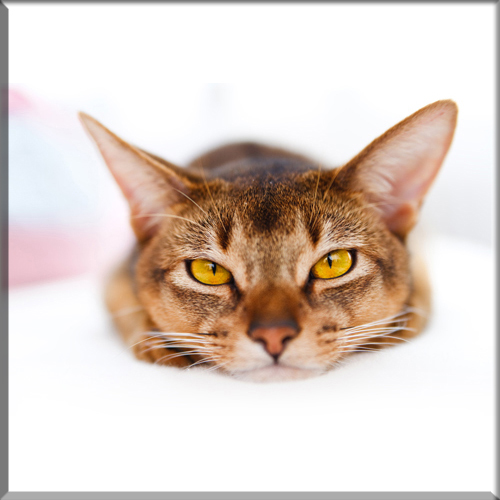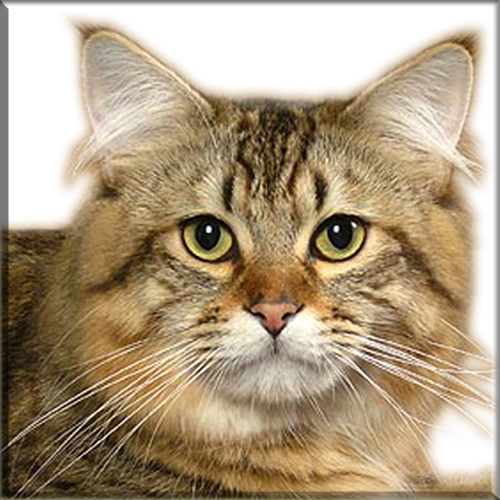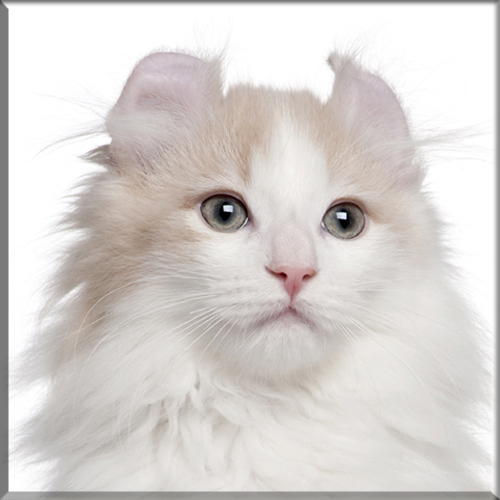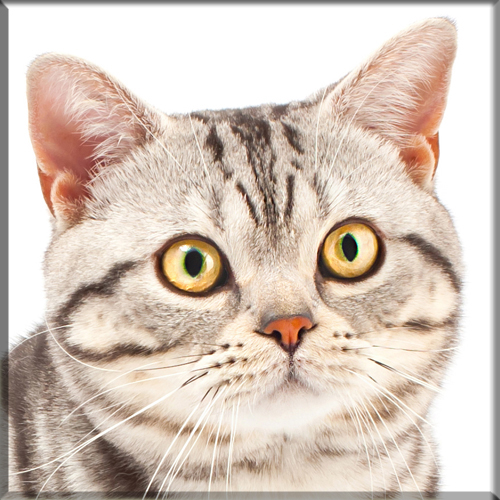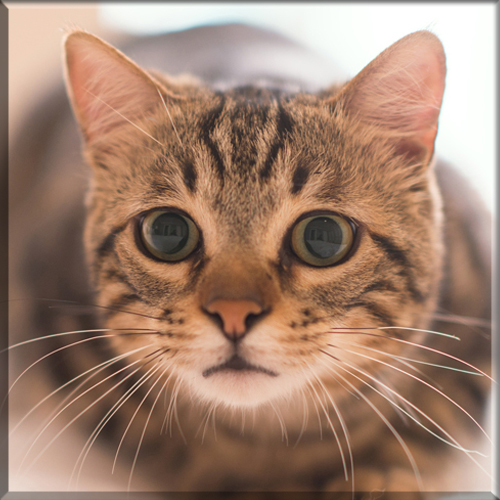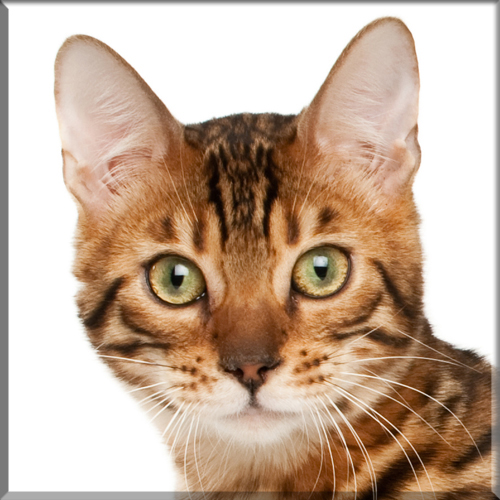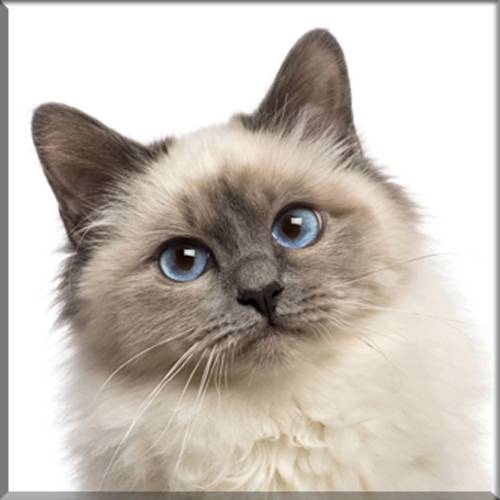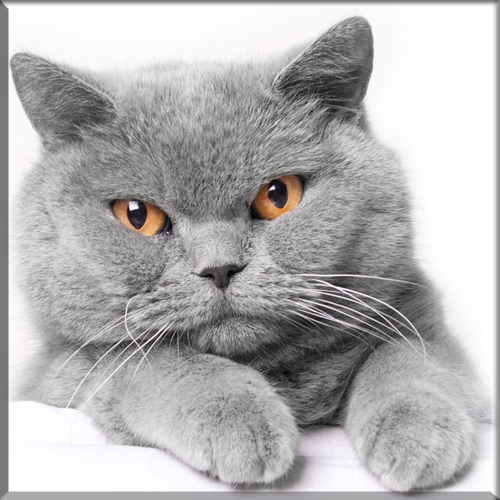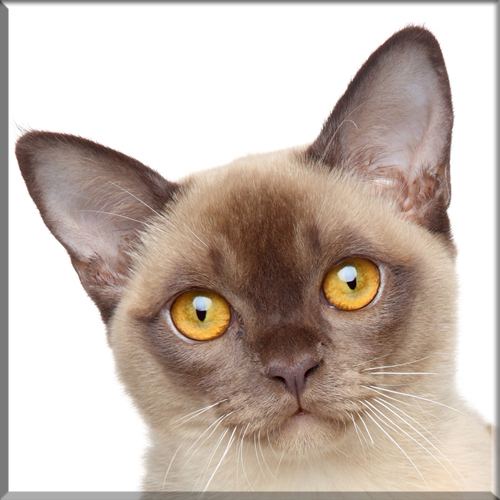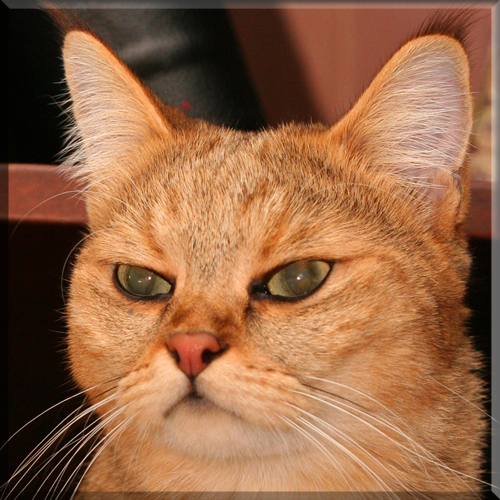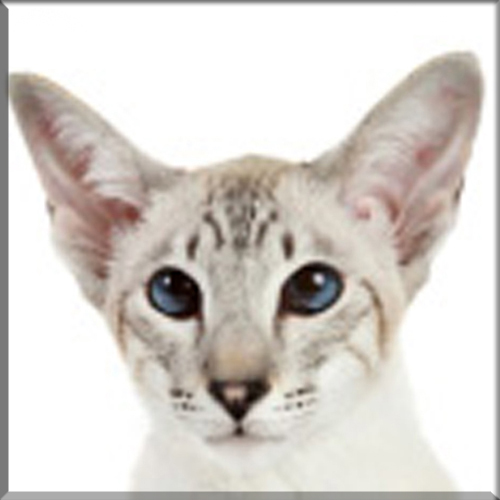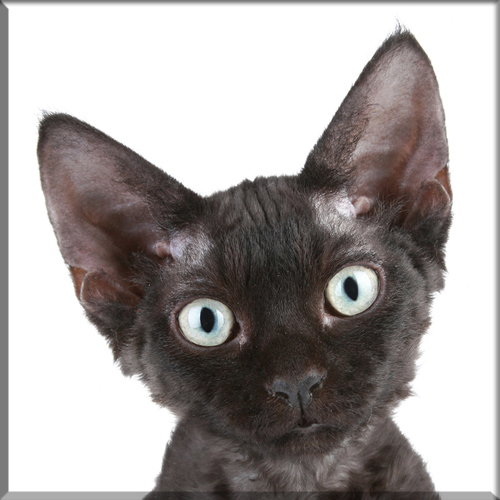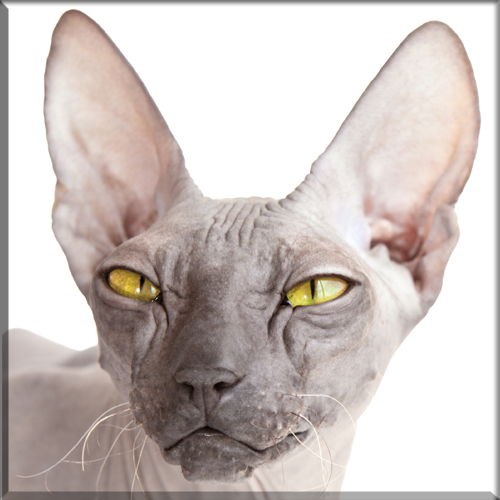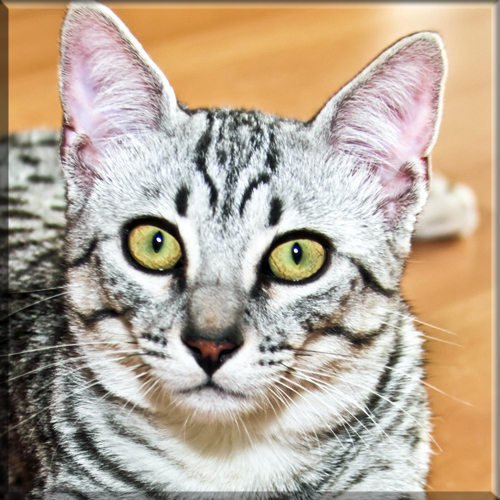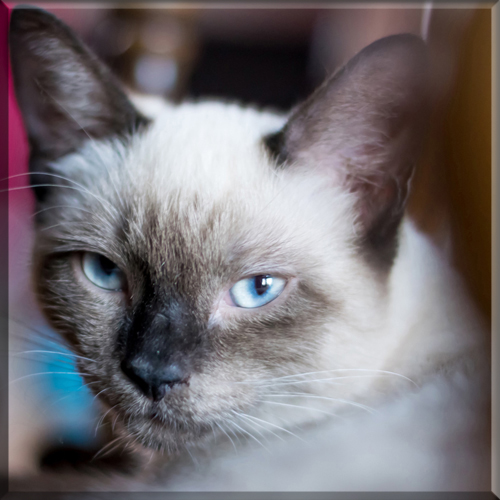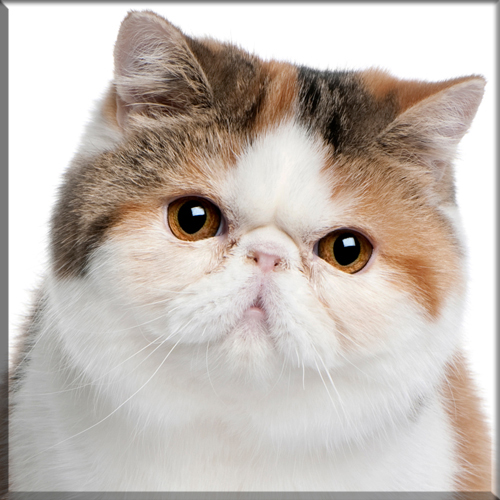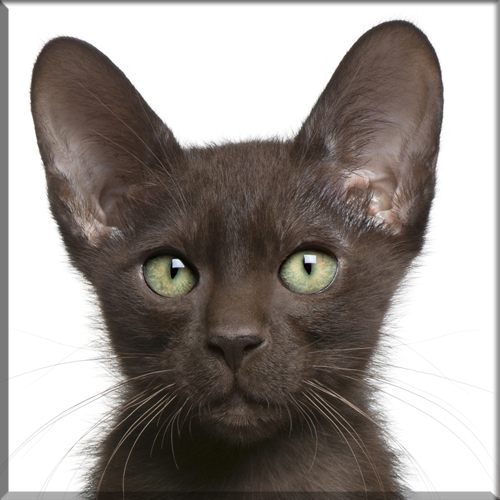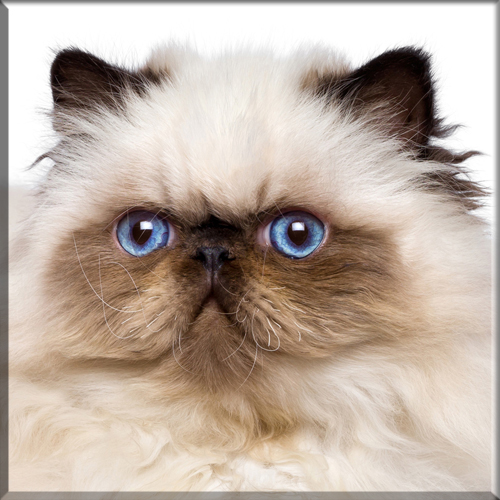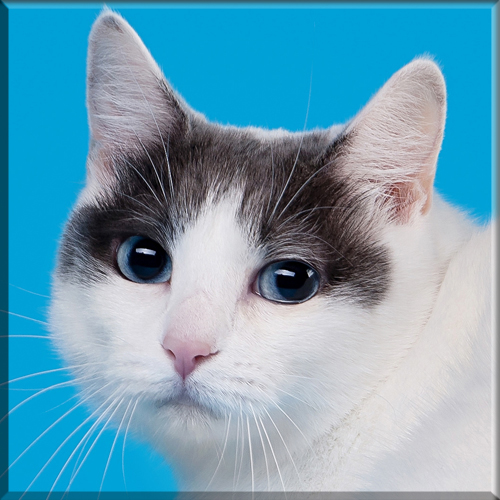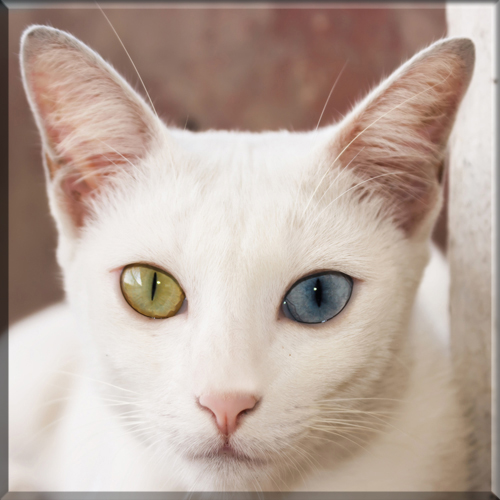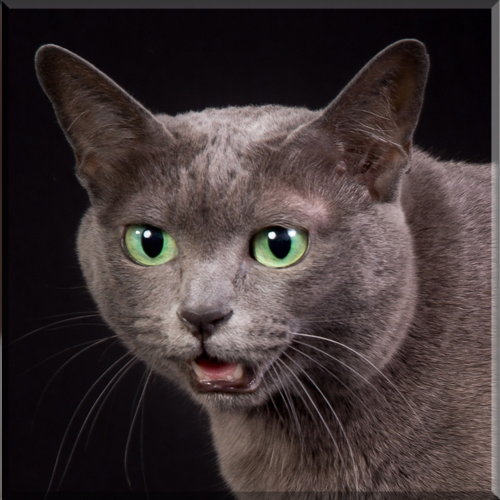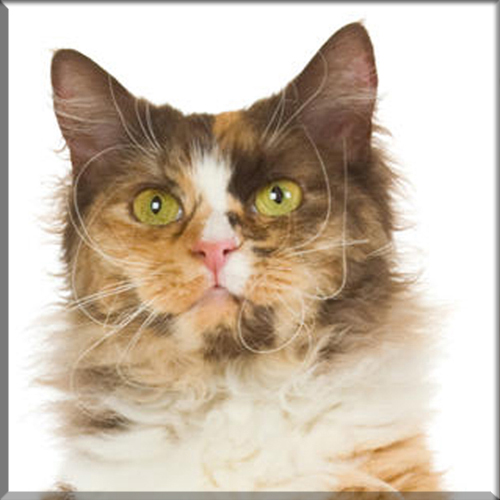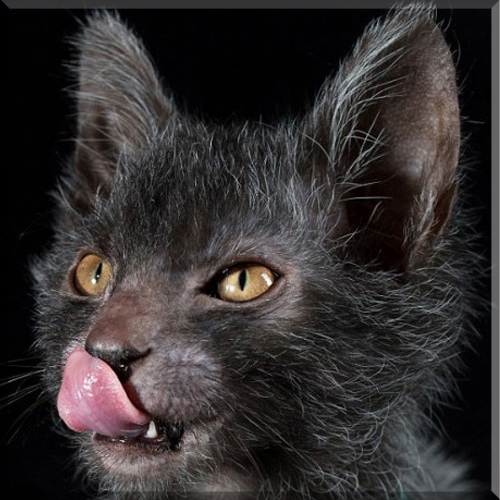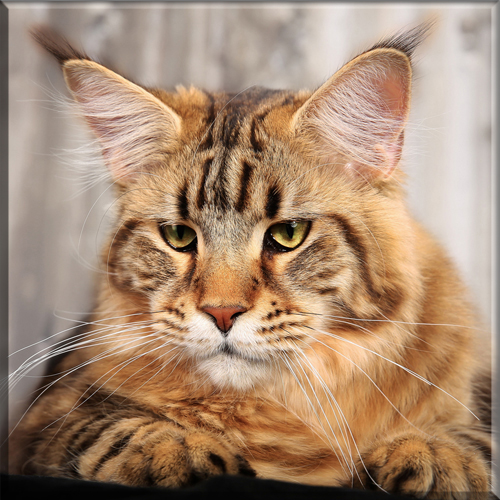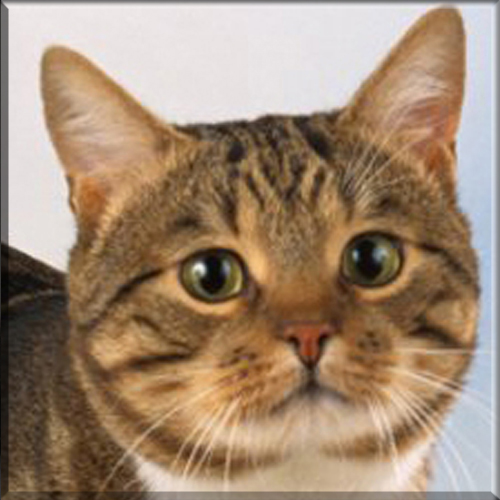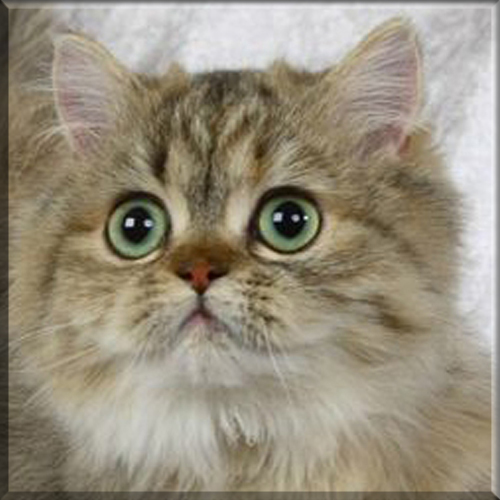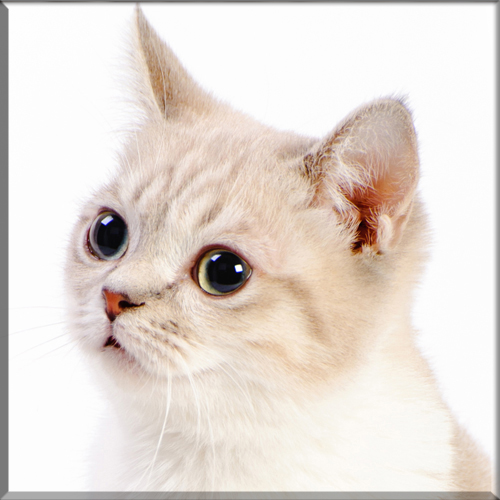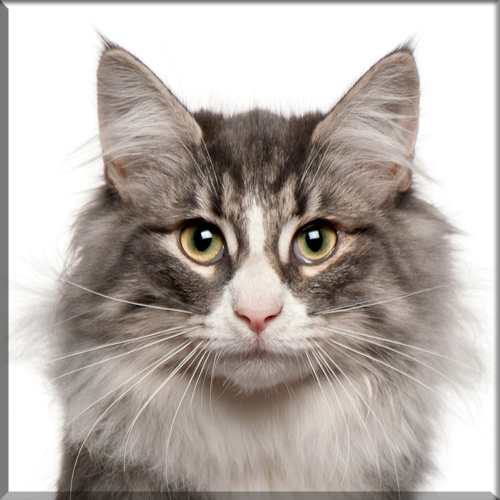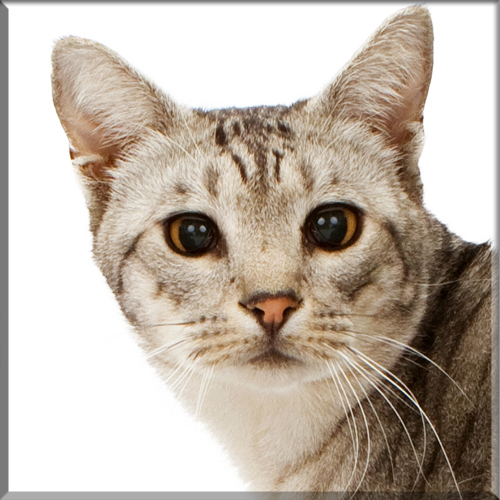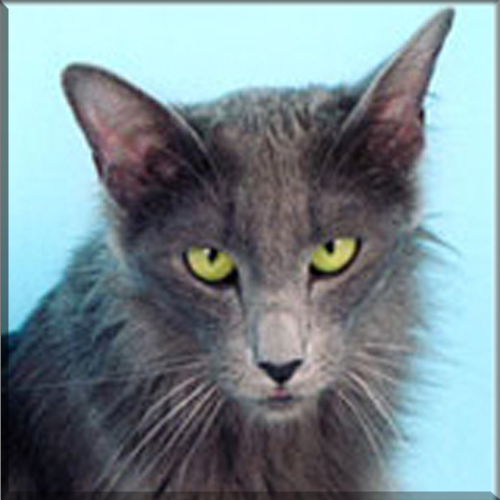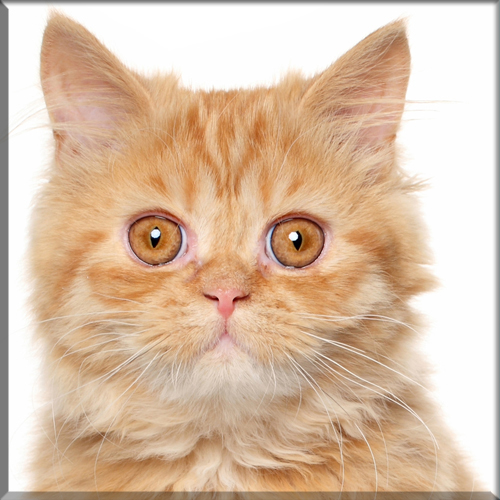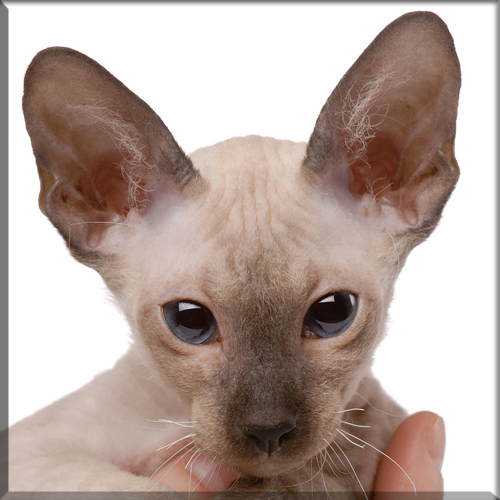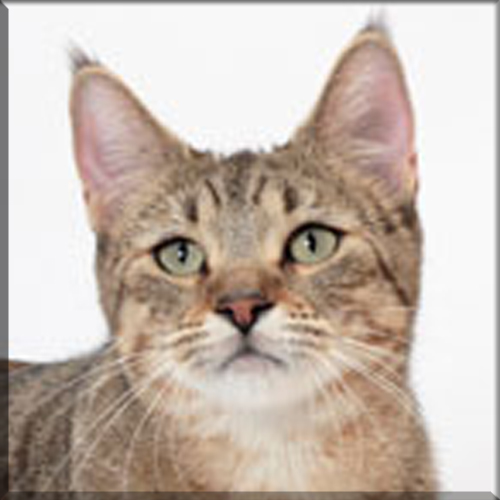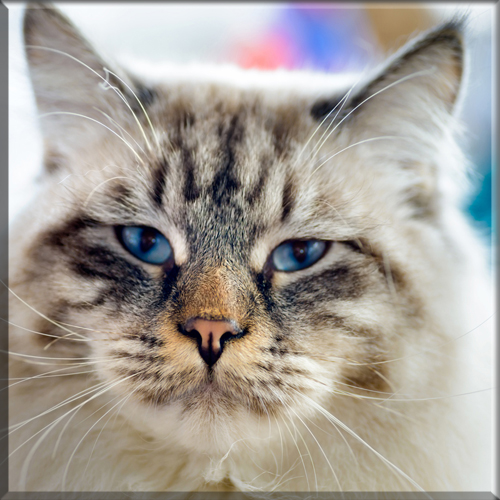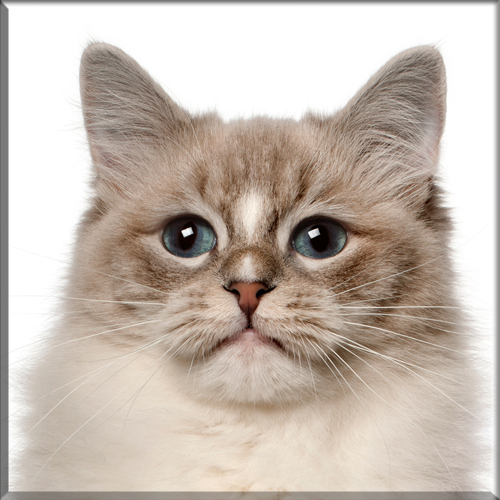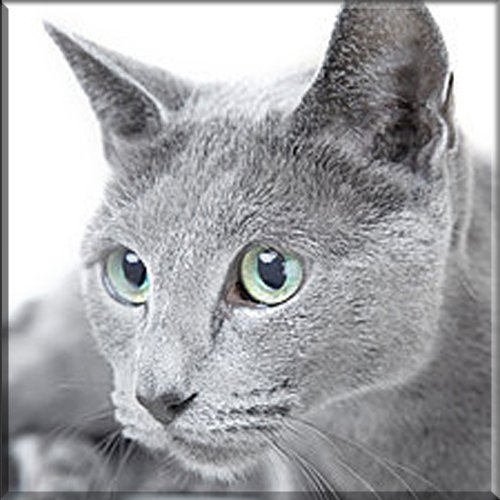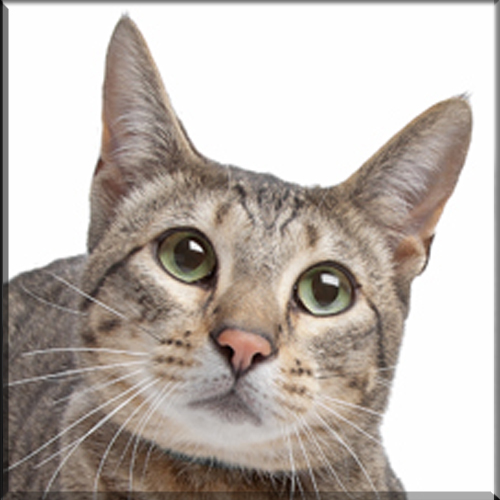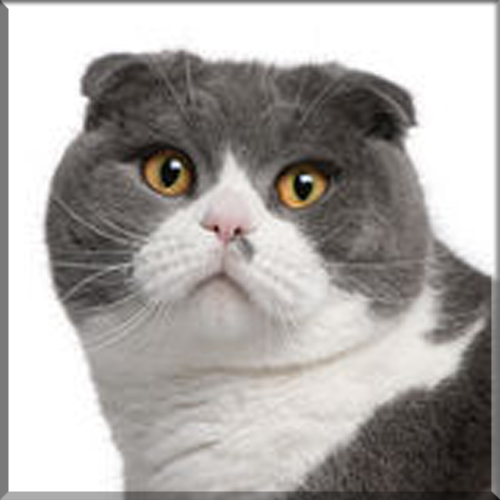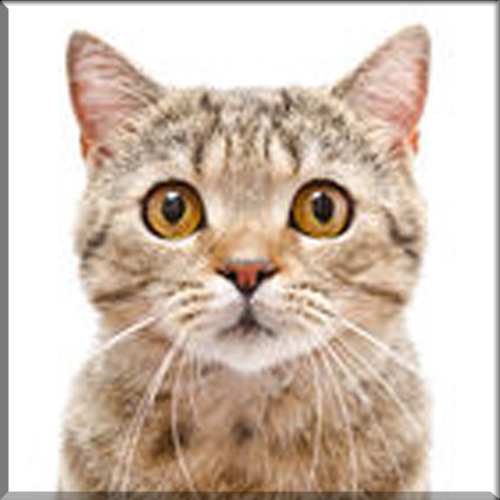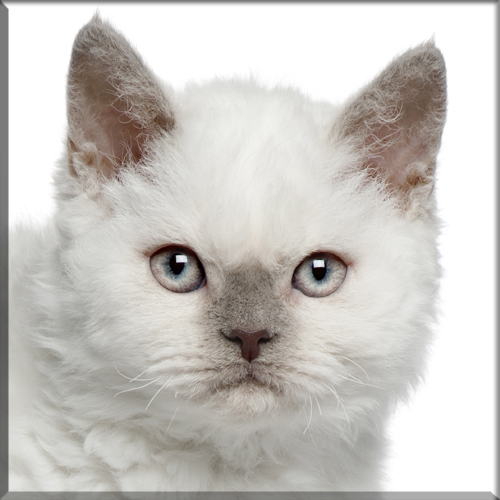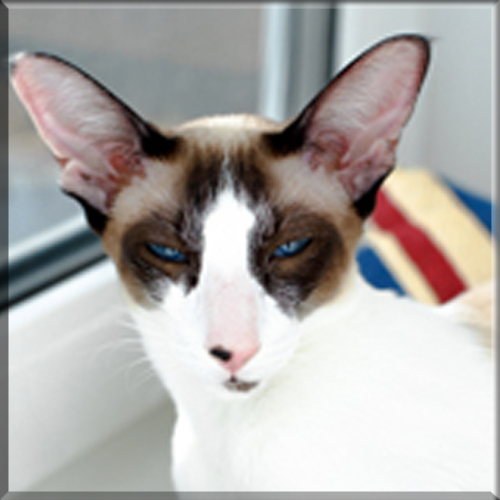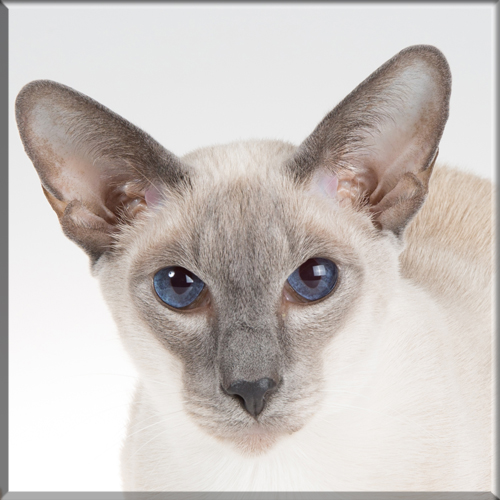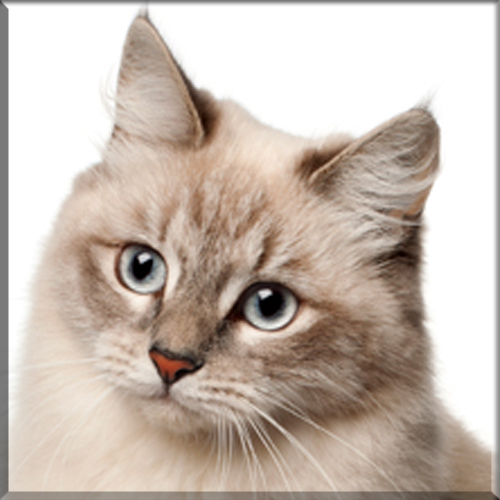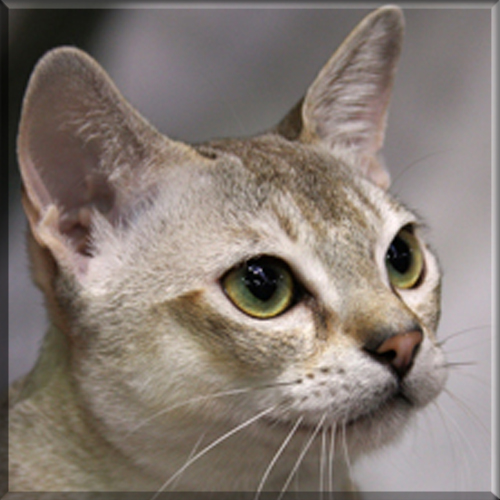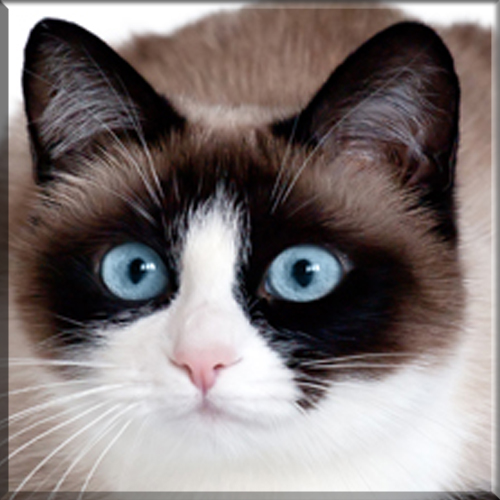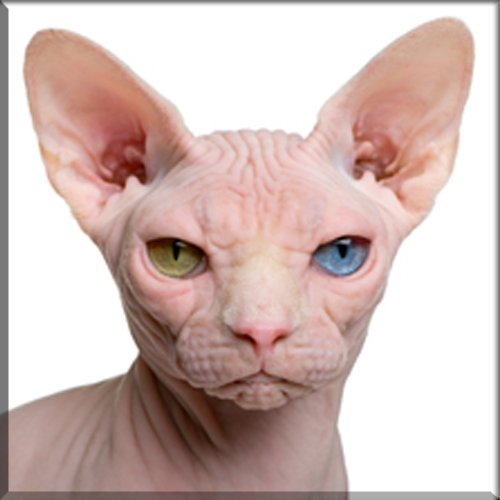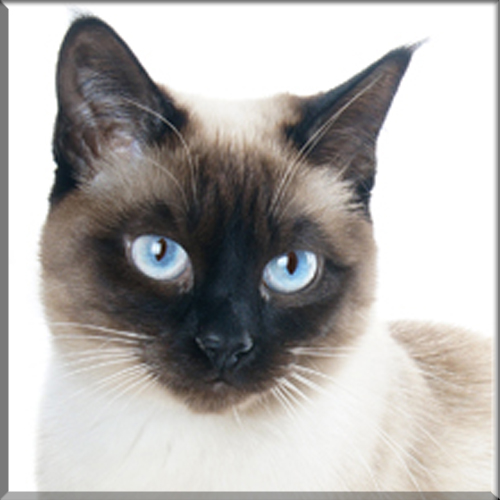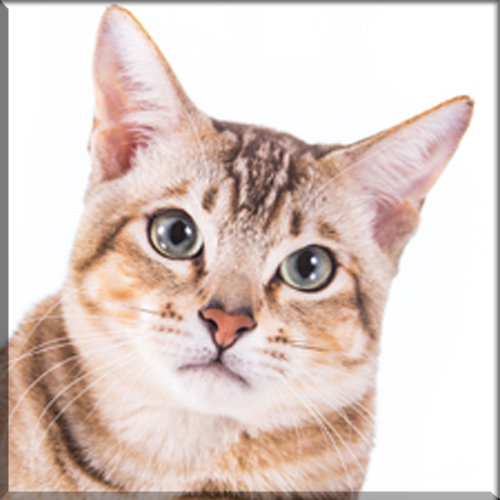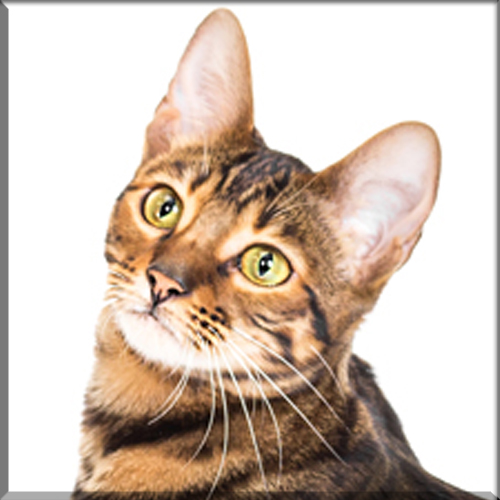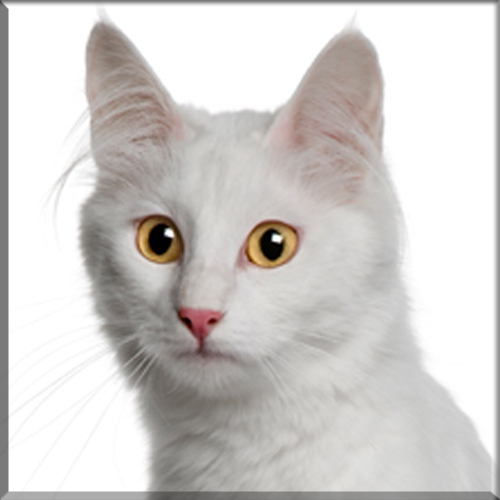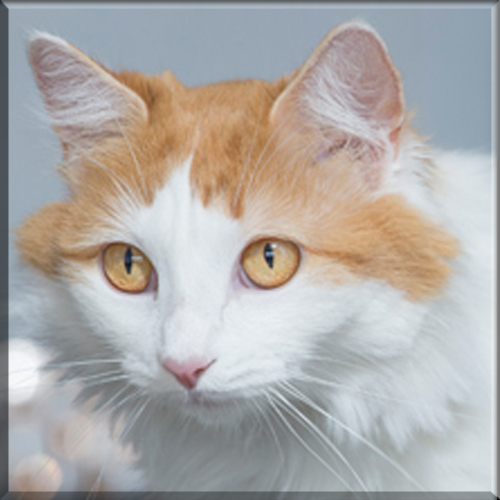Ragdoll
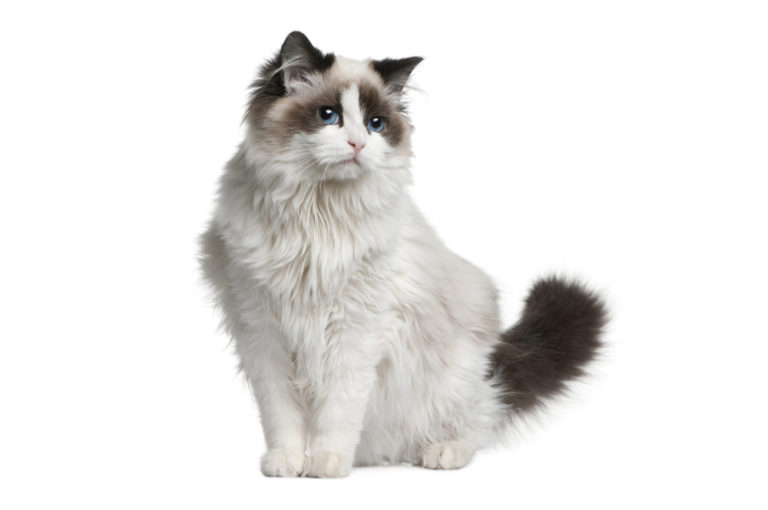
Appearance and features:
Ragdolls are a large muscular thick boned, long bodied cat, with a broad chest and wedge shaped body. They have a rounded forehead with medium sized round tipped ears. All Ragdolls should have large oval, blue colored eyes, moderately wide set, with a well developed chin and a rounded medium length muzzle. The legs should have large boning leading to large round feet. The tail is equal length to the body, and thicker at the base.
Size:
This is a medium to large-size cat weighing 8 to 20 pounds.
Family:
In the 1960s, a regular, non-pedigreed, white, domestic longhaired cat named Josephine produced several litters of typical cats. Josephine was of a Persian/Angora type and had litters sired by several unknown male Birman or Burmese-like cats, one of which had the Siamese point coloration. Josephine later produced kittens with a docile, placid temperament, affectionate nature, and a tendency to go limp and relaxed when picked up.
When a subsequent litter produced more of the same, Ann Baker purchased several kittens from the owner who lived behind her and, believing that she had something special, set out to create what is now known as the Ragdoll. The breed was selectively bred over many years for desirable traits, such as large size, gentle demeanor, pointed coloration, and a tendency to go limp when picked up.
Out of those early litters came Blackie, an all black Burmese-like male, and Daddy Warbucks, a seal point with white feet. Daddy Warbucks sired the founding bi-color female Fugianna, and Blackie sired Buckwheat, a dark brown/black Burmese-like female. Both Fugianna and Buckwheat were daughters of Josephine. All Ragdolls are descended from Baker’s cats through matings of Daddy Warbucks to Fugianna and Buckwheat.
Coloring:
Ragdolls come in six different colors: red, seal, chocolate and the corresponding “dilutes”, including blue, lilac, and cream. This also includes the lynx and tortoiseshell variations in all colors and the three patterns. Ragdoll kittens are born white; they have good color at 8–10 weeks and full color and coat at 3–4 years. The three different patterns are:
- Colorpoint – One color darkening at the extremities (nose, ears, tail, and paws).
- Mitted – Same as pointed, but with white paws and abdomen. With or without a blaze (a white line or spot on the face), but must have a “belly stripe” (white stripe that runs from the chin to the genitals) and a white chin.
- Bicolor – White legs, white inverted V on the face, white abdomen and sometimes white patches on the back. (Excessive amounts of white, or “high white”, on a bicolor is known as the Van pattern, although this doesn’t occur nearly as often as the other patterns.)
Variations:
- Lynx – A variant of the above type having tabby markings.
- Tortoiseshell or “tortie”- A variant noted for mottled or parti-colored markings in the above patterns.
Origin:
The Ragdoll is a cat breed with a color point coat and blue eyes. They are large and muscular semi-longhair cat with a soft and silky coat. Developed by American breeder Ann Baker in the 1960s, they are best known for their docile and placid temperament and affectionate nature. The name “Ragdoll” is derived from the tendency of individuals from the original breeding stock to go limp and relaxed when picked up.
Temperament:
The Ragdoll is marketed by breeders as having a docile, calm and floppy nature with claims that these characteristics have been passed down from the Persian and Birman breeds. Opinions vary as to whether this trait might be the result of genetic mutation. The extreme docility of some individuals has led to the myth that Ragdolls are pain resistant.
Breed standard marketing and publicity material describe the Ragdoll as affectionate, intelligent, relaxed in temperament, gentle, and an easy-to-handle lap cat. The animals are often known as “puppy cats”, “dog-like cats”, “cat-dogs”, etc., because of their placid nature and affectionate behavior, with the cats often following owners from room to room as well as seeking physical affection akin to certain dog breeds. Ragdolls can be trained to retrieve toys and enjoy doing so
Health concerns:
Health conditions reported in the Ragdoll breed are bladder stones and a heart condition known as hypertrophic cardiomyopathy.
Breed Characteristics
Here is a helpful guide for the different characteristics of the breed. On a Scale of 1-5. 1 being very low level to 5 being high level.
Hypoallergenic: No
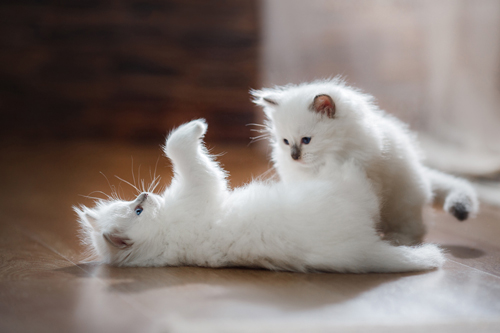
Breeders With Currently Available Kittens
All The Cat Breeds
- Abyssinian
- American Bobtail
- American Curl
- American Shorthair
- American Wirehair
- Balinese
- Bengal
- Birman
- Bombay
- British Shorthair
- Burmese
- Burmillia
- Charteux
- Chausie
- Colorpoint Shorthair
- Cornish Rex
- Devon Rex
- Donskoy
- Egyption Mau
- European Burmese
- Exotic
- Havana Brown
- Highlander
- Himalayan
- Japanese Bobtail
- Khao Manee
- Korat
- LaPerm
- Lykoi
- Maine Coon
- Manx
- Minuet / Napolean
- Munchkin
- Norwegian Forest Cat
- Ocicat
- Oriental Longhair
- Oriental Shorthair
- Persian
- Peterbald
- Pixie Bob
- Ragamuffin
- Ragdoll
- Russian Blue
- Savannah
- Scottish Fold
- Scottish Straight
- Selkirk Rex
- Seychellois
- Siamese
- Siberian
- Singapora
- Snowshoe
- Somali
- Sphynx
- Thai
- Tonkinese
- Toyger
- Turkish Angora
- Turkish Van

